If you want to do it the easy way you should simply use scipy correlation_lags
Also, remember to subtract the mean from the inputs.
import numpy as np
from scipy import signal
x = [4,4,4,4,6,8,10,8,6,4,4,4,4,4,4,4,4,4,4,4,4,4,4]
y = [4,4,4,4,4,4,4,4,4,4,4,4,4,4,4,4,6,8,10,8,6,4,4]
correlation = signal.correlate(x-np.mean(x), y - np.mean(y), mode="full")
lags = signal.correlation_lags(len(x), len(y), mode="full")
lag = lags[np.argmax(abs(correlation))]
This gives lag=-12, that is the difference between the index of the first six in x and in y, if you swap inputs it gives +12
Edit
Why to subtract the mean
If the signals have non-zero mean the terms at the center of the correlation will become larger, because there you have a larger support sample to compute the correlation. Furthermore, for very large data, subtracting the mean makes the calculations more accurate.
Here I illustrate what would happen if the mean was not subtracted for this example.
plt.plot(abs(correlation))
plt.plot(abs(signal.correlate(x, y, mode="full")))
plt.plot(abs(signal.correlate(np.ones_like(x)*np.mean(x), np.ones_like(y)*np.mean(y))))
plt.legend(['subtracting mean', 'constant signal', 'keeping the mean'])

Notice that the maximum on the blue curve (at 10) does not coincide with the maximum of the orange curve.
